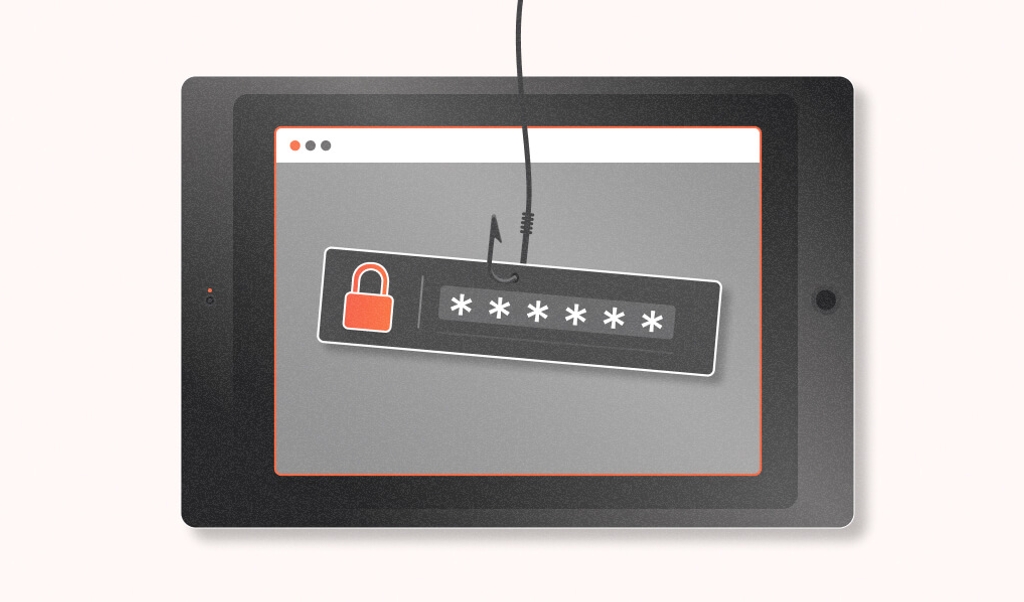Summarize this article with
Account takeover (ATO) incidents have become a prevalent threat in a world where website accounts are increasingly common. This type of fraud jeopardizes sensitive data and has financial consequences for businesses.
This article discusses specific account takeover types, how fraudsters can obtain this information, and how businesses can prevent these devastating fraud attacks.
How does account takeover happen?
Understanding the mechanics behind account takeover is crucial for implementing effective defense strategies. Let's dive into how these unauthorized access incidents typically occur, shedding light on the vulnerabilities attackers exploit to gain control over users' accounts.
Phishing
Phishing is a fraud technique where attackers masquerade as trustworthy entities to trick individuals into revealing sensitive information, such as login credentials or financial details. This is typically carried out through communication methods, such as emails or text messages, that contain malicious links or attachments designed to capture personal data.
By exploiting the victim's trust, fraudsters gain unauthorized access to accounts, leading to potential financial loss and identity theft.
Credential Stuffing
Credential stuffing is a fraud method where attackers use automated tools to try and log in to various websites using stolen usernames and passwords obtained from previous data breaches. This technique relies on the fact that many people reuse their passwords across multiple online services.
When successful, attackers gain unauthorized access to accounts, which can lead to financial theft, identity fraud, and more.
Keylogging
Keylogging, a stealthy fraud technique, involves using software or hardware to record every keystroke a user makes on their device. This covert method captures sensitive information such as passwords, credit card details, and personal messages as they are typed. The recorded data is then transmitted to the attacker, providing them with unauthorized access to private accounts and information for exploitation.
Social Engineering
Social engineering s a manipulation technique that exploits human psychology, rather than technical hacking methods, to gain access to buildings, systems, or data.
Attackers deceive individuals into breaking standard security procedures, often by impersonating coworkers, police, bank officials, or other persons of authority, to obtain sensitive information or physical access without raising suspicion. This fraud relies on people's inherent trust and curiosity, leveraging it to breach security measures indirectly.
Man in the Middle (MitM) attacks
Man-in-the-middle (MitM) attacks are a form of cyber eavesdropping where the attacker secretly intercepts and possibly alters the communication between two parties who believe they are directly communicating. Typically achieved by the attacker making independent connections with the victims and relaying messages between them, these communications make them think they're talking directly to each other over a private connection.
Often occurring in unsecured Wi-Fi networks, MitM attacks allow hackers to capture sensitive data, such as login credentials and credit card information, without the users' knowledge.
Bot attack
Bot attacks are automated cyberattacks by bots or botnets, networks of infected computers, to exploit various vulnerabilities for fraudulent purposes.
These attacks can take many forms, including credential stuffing, where bots attempt to log into accounts using stolen credentials; DDoS (Distributed Denial of Service) attacks, overwhelming servers to take websites offline; and web scraping, stealing content or data en masse. By leveraging bots' speed and anonymity, attackers can execute widespread fraud and theft at scale, often without detection until significant damage has occurred.
The signs of account takeover
Recognizing the early signs of account takeover is essential for businesses to respond and mitigate potential damage promptly. Let's explore critical indicators that suggest an account may have been compromised, enabling organizations to take swift action against unauthorized access.
Unusual account activity
Unusual account activity indicative of an account takeover attempt includes multiple failed login attempts, which suggests someone is trying to guess the correct password. Unexpected password reset requests can signal an intruder's attempt to bypass security measures and gain control of the account.
Additionally, a sudden change in account details, such as email address, phone number, or billing information, often points to an attacker having gained access and attempting to lock out the legitimate user and exploit the account for fraud.
Irregular transaction patterns
Transactions that significantly deviate from a user's typical behavior, such as making purchases in unusual locations, executing high-value transactions, or conducting transactions with an abnormal frequency, can serve as red flags, indicating an account may be compromised.
These anomalies suggest an unauthorized party may have accessed and exploited the account for fraud. Monitoring such irregular activities is crucial for the early detection of account takeovers and for preventing financial loss or identity theft.
Multiple account lockouts
When numerous users report being locked out of their accounts within a short timeframe, it could signify a larger-scale account takeover effort, particularly if these reports are accompanied by unauthorized access or transactions.
This pattern of lockouts often indicates that attackers are using automated methods, such as credential stuffing, to gain unauthorized access to multiple accounts. Such a trend requires immediate investigation and response to prevent widespread fraud and protect user data.
Login attempts from unusual locations
Logins from geographically distant locations within implausibly short time frames or from regions where the business does not typically have customers can serve as significant red flags for potential account takeover attempts. These anomalies may indicate that an attacker has gained unauthorized access to an account and is attempting to conduct fraudulent activities.
Monitoring and analyzing login patterns for such irregularities is crucial for early detection and prevention of account takeovers.
Strategies for account takeover prevention
As fraud evolves, so must our approaches to safeguarding against account takeovers. This section outlines practical strategies for account takeover prevention, equipping businesses with the tools and knowledge needed to prevent account takeovers and protect user data.
Enable notifications for account changes
Setting up alerts for account modifications is an early warning system, enabling swift detection of suspicious activities that may indicate an account takeover attempt.
When unexpected changes such as password resets, email address updates, or alterations to billing information are detected, these alerts prompt immediate investigation and action.
Implement multi-factor authentication
Adding an extra layer of security beyond just a password, such as multi-factor authentication (MFA), significantly reduces the risk of unauthorized account access.
MFA requires users to provide two or more verification factors to gain access to their accounts, making it much harder for attackers to breach accounts with stolen or guessed passwords alone.
Employ strong password policies
Implementing strict password guidelines that mandate the creation of complex and unique passwords reduces the risk of successful brute-force attacks and credential stuffing. Such policies ensure that passwords are more complicated to predict or replicate, acting as a robust first line of defense against unauthorized account access.
Educate users and employees
Awareness and education play a pivotal role in preventing account takeovers, with regular training sessions on the latest security threats and safe online practices equipping users to recognize and respond to potential risks. This proactive approach fosters a culture of security mindfulness, significantly reducing the likelihood of successful cyber attacks.
Implement account lockout mechanisms
Setting thresholds for failed login attempts and temporarily locking accounts after these limits are reached serves as a deterrent to attackers, thwarting brute-force entry methods. This security measure frustrates malicious attempts and protects user data by adding a critical pause during which suspicious activity can be investigated and resolved.
How can you detect ATO attacks?
ATO (Account Takeover) attacks can be detected through various methods, leveraging advanced technology to identify and mitigate unauthorized access attempts. Here's how a device intelligence tool can facilitate ATO detection:
- Utilizing Unique Visitor Identification: Collecting more than 70 signals across devices and browsers uniquely identifies visitors—even those attempting to hide their identity—enabling the detection of unauthorized logins and phishing attempts.
- Analyzing Login Patterns: The tool can identify unusual login patterns, such as logins from unknown devices, geolocations, or tampered devices, which may indicate fraudulent activities.
- Reducing False Positives: By accurately identifying users and their activities, device intelligence aids in reducing false positives, ensuring that legitimate transactions are less likely to be mistakenly flagged as fraudulent and streamlining the user experience for genuine users.
These methods help detect and prevent account takeover fraud and safeguard users' accounts from unauthorized access.
Protect your business from account takeover with Fingerprint
Enhancing account security through measures like multi-factor authentication, strict password policies, awareness training, and setting thresholds for failed login attempts are crucial to mitigating the risk of account takeovers.
Additionally, leveraging specialized device intelligence tools like Fingerprint offers a sophisticated approach to real-time detection of suspicious activities, utilizing unique visitor identification, analyzing login patterns, and reducing false positives to protect user data effectively.
To ensure your accounts remain secure against unauthorized access and to explore how Fingerprint can help you prevent fraud.
FAQ
Account takeover prevention refers to the strategies and technologies employed to protect users' online accounts from being accessed and controlled by unauthorized individuals or entities. It involves measures such as multi-factor authentication, continuous monitoring for suspicious activities, and user education on secure practices to thwart attackers' efforts to gain unauthorized access to accounts.
Account takeover protection is crucial because it safeguards individuals' and organizations' sensitive information from unauthorized access, preventing financial loss, data breaches, and damage to reputation. It ensures the integrity and confidentiality of user data, maintaining trust in digital transactions.
Virtually anyone with an online account is at risk of account takeover fraud, including individuals, businesses, and organizations across various sectors. This risk is exceptionally high for accounts associated with financial transactions, sensitive personal information, or privileged business access.



